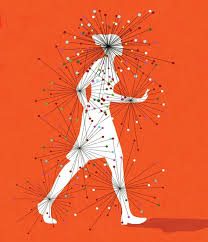 Pain physiology is a complex topic that involves the nervous system, from peripheral receptors to higher brain centers.
Pain physiology is a complex topic that involves the nervous system, from peripheral receptors to higher brain centers.
1. Nociception: Pain begins with nociceptors, specialized sensory neurons that detect potentially harmful stimuli.
Nociceptors respond to thermal, mechanical, or chemical stimuli that could cause tissue damage.
2. Signal transduction:
When stimulated, nociceptors convert the stimulus transducers into an electrical action potential signal.
This process involves ion channels, particularly TRP (transient receptor potential) channels and voltage-gated sodium channels.
Following tissue injury, inflammatory mediators, such as prostaglandins, bradykinin are released.
These inflammatory mediated substances can lower the threshold of nociceptors, making them more sensitive resulting in hyperalgesia.
The electrical signal travels along the axon of the nociceptor to the dorsal horn of the spinal cord: first-order neuron.
Here, it synapses with second-order neurons, often releasing neurotransmitters like substance P and glutamate.
Second-order neurons cross to the opposite side of the spinal cord and ascend in pathways like the spinothalamic tract.
Second-order neurons reach the thalamus, where they synapse with third-order neurons.
Central processing of third-order neurons project to various brain regions:
Somatosensory cortex the location and intensity of pain.
Limbic system, the emotional aspects of pain.
Prefrontal cortex where cognitive aspects, like attention and expectation are.
The brain can also send signals down the spinal cord to modulate pain perception, involving regions like the periaqueductal gray (PAG) and rostral ventromedial medulla (RVM).
These areas can release neurotransmitters-endorphins, serotonin, that inhibit or facilitate pain signals.
Types of pain:
Nociceptive pain: Caused by tissue damage
Inflammatory pain: Associated with immune response
Neuropathic pain: Due to damage or dysfunction in the nervous system itself
Chronic pain can involve central sensitization, where neurons in the CNS become more responsive.
Chronic pain may also involve changes in gene expression, synaptic strength, and neural circuitry.
Pain is influenced by factors like:
Past experiences Cultural background Psychological state (anxiety, depression) Context and meaning of the pain
